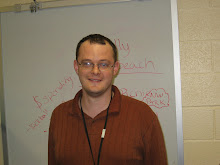I recently finished reading Jerry Coyne's book "Why Evolution is True." It is a book that lays out, very patiently, the various lines of evidence for the theory of evolution, in case some people missed it the first 100 times.
As a science educator (I co-teach two biology classes) it is frustrating that this book seems to need writing again and again. Right now, my classes are in the middle of the evolution unit, and it is meeting with a bit more resistance this year than last. I have had to answer several student objections about the idea that humans can trace their lineage back to sea-dwelling creatures (when I pointed out our vestigial webbing between our fingers.) I have also heard several disparaging comments from students about evolution (like the student who insisted that a theory is a story about something for which there is no real evidence; it was an interesting class discussion.) I have also been advised by a supervisor that I should not even touch the Scopes and Dover trialw, which I still think could serve as a strong motivator.
I wanted to read this book primarily to look for interesting ways and illustrations I can use to explain how, and how we know, evolution occurs in nature. Below is my review for this very reccomended book:
__________________________________________________________
Nothing in biology makes sense except in light of evolution. This is the main theme running through this book. What Coyne's book is not, is a directed rebuttal of ID creationism. What Coyne's book IS, is a very well- and clearly-written survey of the various evidences for evolution. Coyne's point is similar to Dobzansky's: all of this varied evidence can only be made sense of via the model of evolution. The fossil record, genetic evidence, etc, would simply be nonsensical under a theory like ID (unless the designer designed everything to look like it had evolved).
As a science teacher, I wish this were a book I could give both to my kids and to other science educators. Coyne gives very engaging and crystalline summaries of concepts like speciation, genetic drift, the significance of vestigial structures, and the falsifiability of evolutionary theory. For my fellow science educators, this book provides some great ideas on how to explain these and similar concepts, and also provides fascinating examples of evolution in action (I had no idea, for instance, that several sea-dwelling creatures have vestigial and all-but-functionless eyes!)
Two things that particularly struck me about this book: first, one of the most common ID objections is that we have never directly observed macroevolution/speciation in action. While Coyne incorrectly fails to correct this misimpression - any doubters, look it up - he deal well with his reply (which will still doubtless be disappointing to ID supporters). Coyne rightly notes that macroevolution takes place generally over many, many thousands of years, and that its glacial pace makes it appear as if it is not taking place. (Long and short: the best way to see the slow process of macroevolution at work is via the fossil record, and we have done that in spades.) The only reason I bring this up is that this is considered by IE supporters to be a very "live" and concerted objection, and Coyne's response, by contrast, is very, very subtle and indirect. This indirect response could be seen as a weakness by evolution's handful of critics.)
Secondly, Coyne goes through all of the lines of evidence for evolution in some detail EXCEPT the genetic evidence. As many have noted, one could ver well throw out all the fossil evidence and still have enough evidence, via genetics, of evolution. The chapters on paleontological, embryological, and zoological, and geographic evidences for evolution are very powerful. But I really missed, and hoped for, a good chapter on what many feel to be the strongest evidence for evolution: the genetic code. (Good books have been written entirely on this evidence, including Daniel J. Fairbanks's "Relics of Eden," and Sean Carroll's "Making of the Fittest." Both are highly reccomended.
Despite these points, this book is exactly what the lay-public needs. As statistics confirm that the general populace lacks good education and understanding of how evolution works (and why evolution is a sound theory), Jerry Coyne has written a patient, clear, and interesting book marshal ling the various evidences for evolution (and, by converse, against ID). As mentioned, Coyne's book is not devoted to direct confrontation with ID "theorists" like Behe and Demski. (See Miller's "Only a Theory" and Pennock's "Tower of Babel," just to mention two of hundreds.) Rather, Coyne does a great job arguing the positive case that, as Dobzhansky said, nothing in biology makes sense except in light of evolution. If only everyone would read this.
Subscribe to:
Post Comments (Atom)

No comments:
Post a Comment